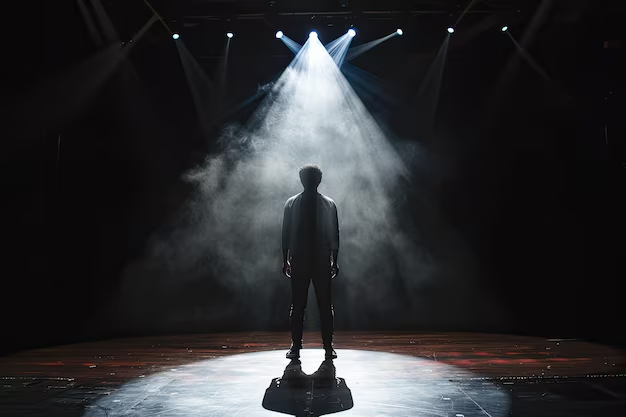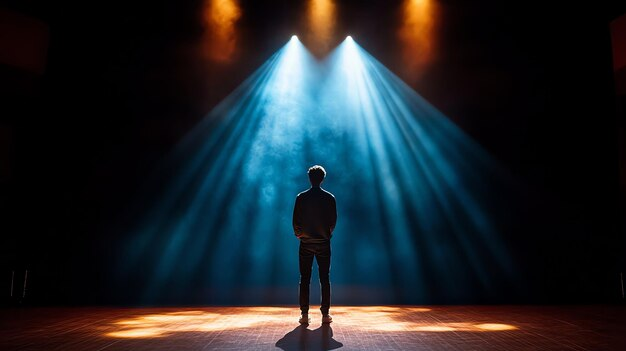Understanding the Basics of Beam Angle
Beam angle refers to the spread of light emitted from a fixture, measured in degrees. It defines how wide or narrow the light beam is from the source to its edges, where the intensity drops to 50% of the center (often called the “field angle”). A narrow beam angle produces a concentrated, intense light, while a wide beam angle spreads light over a larger area with less intensity.
In stage lighting, architectural design, and commercial installations, beam angle plays a vital role in determining how light interacts with people, objects, and space. Selecting the correct beam angle ensures your light hits the right place, creates the desired mood, and doesn’t cause unwanted spill or glare.
Narrow vs. Wide Beam Angles: What's the Difference?
| Beam Angle | Light Output | Coverage | Common Use |
|---|---|---|---|
| 5–15° | Very narrow, focused | Small, distant target | Beam effects, long throw, architectural columns |
| 20–35° | Medium focus | Controlled area | Stage spotlights, displays, gallery lighting |
| 40–60° | Wide spread | Broad surface | General wash lights, room fill, backdrops |
| 60°+ | Very wide | Close and ambient fill | Accent lighting, uplighting, house lighting |
A 10° beam can cut through fog or haze for sharp beam effects (as seen in concerts or nightclubs), while a 60° beam softly illuminates a wall or backdrop without hot spots.
Why Beam Angle Matters in Stage Lighting
1. Control Over Visual Focus
In theatrical and concert settings, beam angle helps direct the audience’s attention. A tight beam (e.g., 6°) isolates a performer in dramatic fashion, while a wider beam (e.g., 45°) offers a soft, atmospheric wash across the stage.
Choosing the wrong beam angle can ruin an effect—too wide and it spills onto unintended scenery; too narrow and it misses the intended area.
2. Creating Visual Texture
Beam angles also define how light interacts with haze, smoke, or surfaces. Narrow angles create piercing shafts of light that are visible mid-air, making them ideal for beam shows. Wider angles provide soft washes and color blends, contributing to background mood.
For example:
A 250W 11R Super Beam Moving Head Light (≈0.6°) creates tight, laser-like beams ideal for tunnel-style effects.
A 200W Zoom LED Fresnel Light (15–50° adjustable) creates a theatrical wash with seamless transitions.
3. Fixture Placement and Distance
Beam angle directly affects how far you can place a light from its target. A narrow beam throws farther and concentrates intensity. A wide beam diffuses quickly and is better suited for close-up or ambient coverage.
Designers must consider:
Ceiling height
Stage depth
Throw distance to walls or sets
This helps determine whether a beam light, spot light, or flood/wash light is best suited.


Beam Angle vs. Field Angle
While beam angle defines where intensity falls to 50%, field angle includes the outer edge where intensity drops to 10%. This is important when blending multiple fixtures or calculating overlap.
Example:
A beam angle of 30°, but a field angle of 45°, means your eye sees soft spill beyond the defined beam.
In architectural installs, knowing both helps avoid harsh cutoffs or distracting shadows.
How to Choose the Right Beam Angle
Ask these questions:
What is the lighting distance? Greater distance usually requires narrower angles.
Do you want focused or diffused light? Focused = narrow beam; Diffused = wide beam.
What’s the purpose? Backlighting, spotlighting, wall washing, or beam effect?
Are atmospheric effects (fog/haze) in play? Narrow beams interact better with haze.
Real-World Examples
Concert Rigging
Use 6°–10° beams to cut through haze and create visual “spears” from above.
Art Installations
30°–45° wash lights for highlighting sculptures or ambient mood across the floor.
Museum Walls
60° beam for smooth, even lighting across an entire painting without center hotspots.
Outdoor Architectural
15° beam to uplight tall columns or trees from a ground fixture with minimal spill.
Zoom Fixtures: The Best of Both Worlds
Modern fixtures often feature motorized zoom, offering adjustable beam angles in a single unit. For instance:
A 37x25W Zoom Wash Light may offer 8° to 60° zoom.
A 200W Zoom Par Light can transition from beam to flood live during a show.
Zoom fixtures reduce the need for multiple lights and add flexibility for cue-driven environments.
Conclusion
Beam angle is not just a number—it’s a design decision that shapes your entire lighting environment. Whether you’re spotlighting a soloist, creating immersive tunnels of light, or washing a backdrop in soft tones, the beam angle determines where your light goes and how it behaves.
Understand it. Control it. And your lighting will not only look better—it will feel intentional.
READ MORE:





Blue Sea Lighting is an enterprise with rich experience in the integration of industry and trade in stage lighting and stage special effects related equipment. Its products include moving head lights, par lights, wall washer lights, logo gobo projector lights, power distributor, stage effects such as electronic fireworks machines, snow machines, smoke bubble machines, and related accessories such as light clamps.
Quick Links
For more questions subscribe to our email








